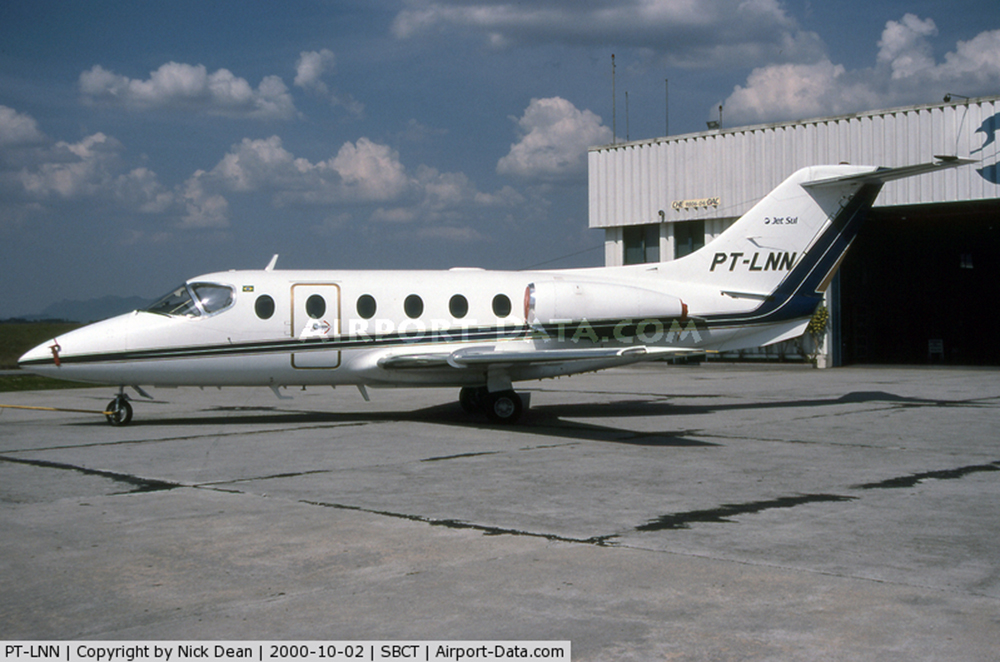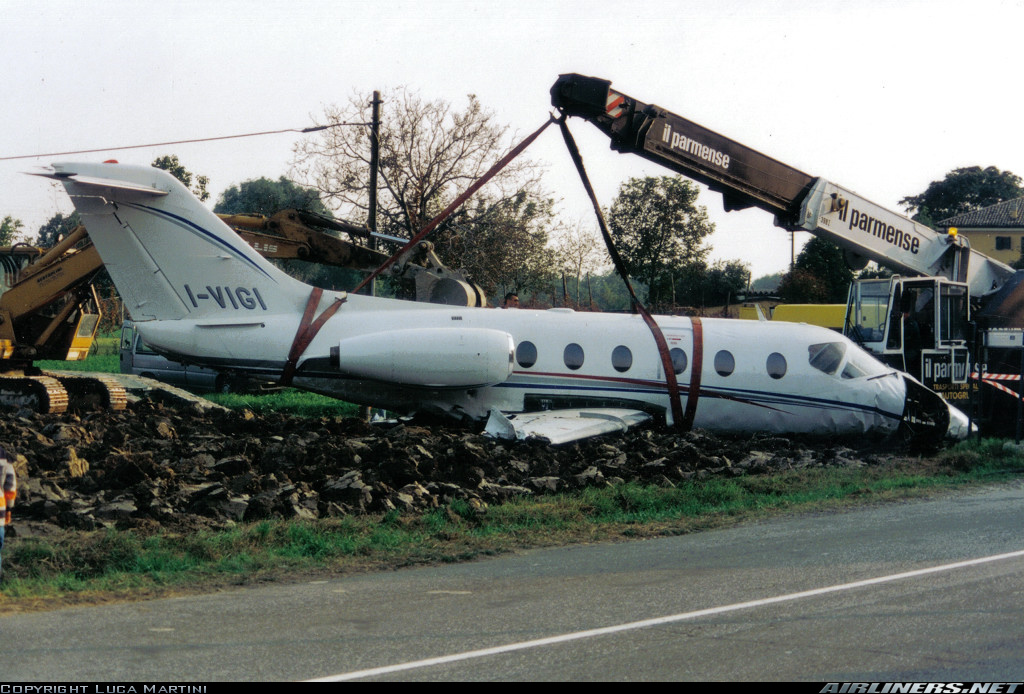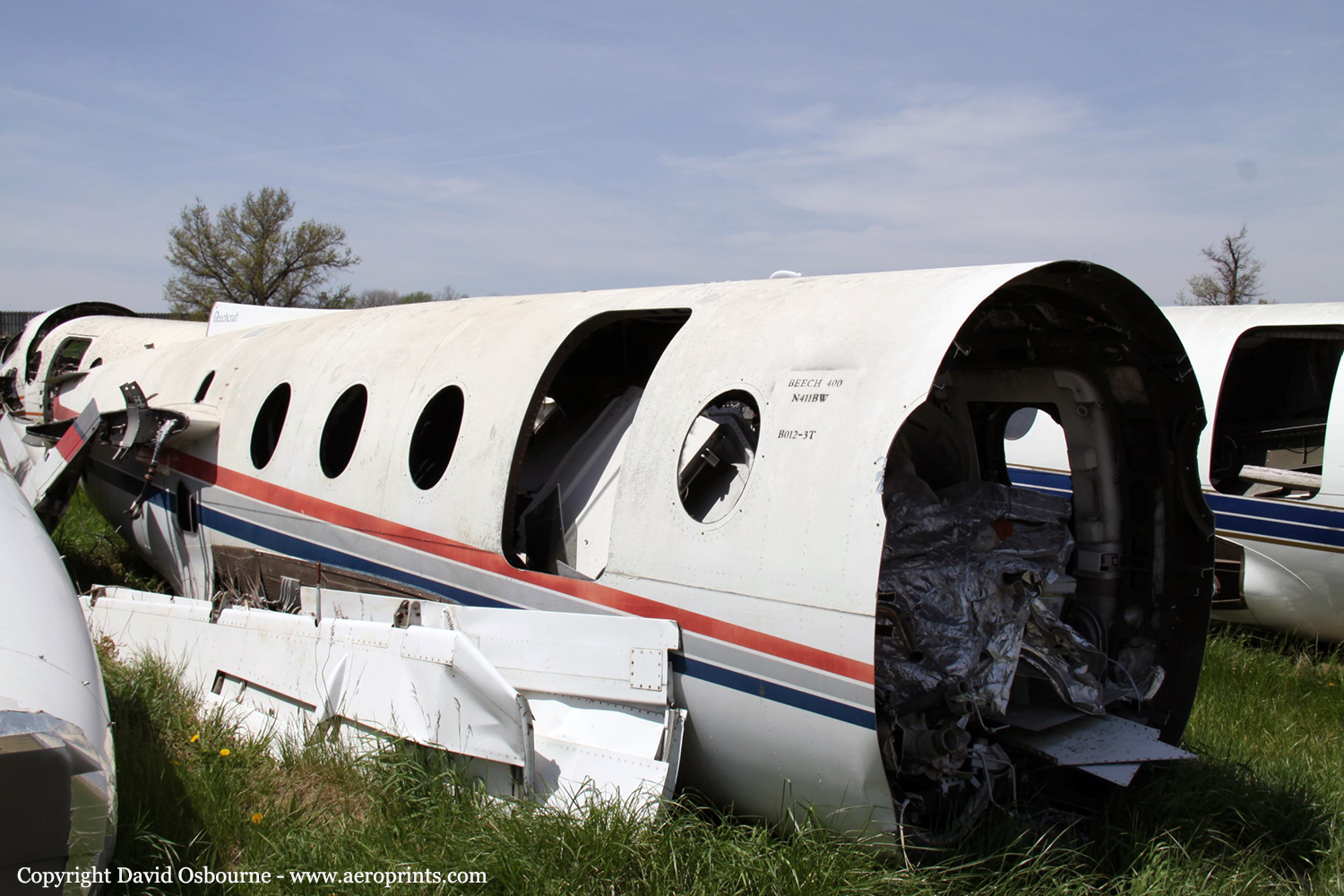Country
Crash of a Mitsubishi MU-300 Diamond 1A in Santos
Date & Time:
Mar 23, 2003 at 1025 LT
Registration:
PT-LNN
Survivors:
Yes
Schedule:
Rio de Janeiro – Santos
MSN:
0048
YOM:
1982
Crew on board:
2
Crew fatalities:
Pax on board:
1
Pax fatalities:
Other fatalities:
Total fatalities:
0
Captain / Total hours on type:
35.00
Copilot / Total hours on type:
19
Circumstances:
The aircraft departed Rio de Janeiro-Santos Dumont Airport on a flight to Santos, carrying one passenger and two pilots. Following an approach via the local NDB, the crew started the descent to Santos Airport but was forced to initiate a go-around procedure because he was not properly aligned. A second attempt to land was started to runway 35 with a tailwind component. Following an unstabilized approach, the aircraft landed 450 metres past the runway threshold (runway 35 is 1,390 metres long). Unable to stop within the remaining distance, the aircraft overran and came to rest in the Bertioga Canal. All three occupants evacuated safely while the aircraft was damaged beyond repair.
Probable cause:
Wrong approach configuration on part of the crew who continued the descent while the aircraft was unstable and moreover with a tailwind component. The aircraft landed at an excessive speed about 450 metres past the runway threshold, reducing the landing distance available. The tailwind component and the crew inexperience was contributing factors.
Final Report:


Crash of a Mitsubishi MU-300 Diamond in Anderson
Date & Time:
Mar 25, 2002 at 0901 LT
Registration:
N617BG
Survivors:
Yes
Schedule:
Memphis – Anderson
MSN:
067
YOM:
1983
Crew on board:
2
Crew fatalities:
Pax on board:
4
Pax fatalities:
Other fatalities:
Total fatalities:
0
Captain / Total hours on type:
1000.00
Copilot / Total hours on type:
275
Aircraft flight hours:
4078
Circumstances:
The MU-300 on-demand passenger charter flight sustained substantial damage during a landing overrun on a snow/ice contaminated runway. The captain, who was also the company chief pilot and check airman, was the flying pilot, and the first officer was the non flying pilot. Instrument meteorological conditions prevailed at the time of the accident. Area weather reporting stations reported the presence of freezing rain and snow for a time period beginning several hours before the accident. The captain did not obtain the destination airport weather observation until the flight was approximately 30 nautical miles from the airport. The flight received radar vectors for a instrument landing system approach to runway 30 (5,401 feet by 100 feet, grooved asphalt). The company's training manual states the MU-300's intermediate and final approach speeds as 140 knots indicated airspeed (KIAS) and Vref, respectively. Vref was reported by the flight crew as 106 KIAS. During the approach, the tower controller (LC) gave the option for the flight to circle to land or continue straight in to runway 30. LC advised that the winds were from 050-070 degrees at 10 knots gusting to 20 knots, and runway braking action was reported as fair to poor by a snow plow. Radar data indicates that the airplane had a ground speed in excess of 200 knots between the final approach fix and runway threshold and a full-scale localizer deviation 5.5 nm from the localizer antenna. The company did not have stabilized approach criteria establishing when a missed approach or go-around is to be executed. The captain stated that he was unaware that there was 0.7 percent downslope on runway 30. The company provided a page from their airport directory which did not indicate a slope present for runway 30. The publisher of the airport directory provided a page valid at the time of the accident showing a 0.7 percent runway slope. Runway slope is used in the determination of runway performance for transport category aircraft such as the MU-300. The airplane operating manual states that MU-300 landing performance on ice or snow covered runways has not been determined. The airplane was equipped with a cockpit voice recorder with a remote cockpit erasure control. Readout of the cockpit voice recorder indicated a repetitive thumping noise consistent with manual erasure. No notices to airman pertaining to runway conditions were issued by the airport prior to the accident.
Probable cause:
Missed approach not executed and flight to a destination alternate not performed by the flight crew. The tail wind and snow/ice covered runway were contributing factors.
Final Report:

Crash of a Mitsubishi MU-300 Diamond in Cleveland
Date & Time:
Feb 10, 2002 at 2302 LT
Registration:
N541CW
Survivors:
Yes
Schedule:
Chicago - Cleveland
MSN:
004
YOM:
1980
Crew on board:
2
Crew fatalities:
Pax on board:
0
Pax fatalities:
Other fatalities:
Total fatalities:
0
Captain / Total hours on type:
2000.00
Copilot / Total hours on type:
326
Aircraft flight hours:
7457
Circumstances:
As the airplane was descending to the airport, the pilot-in-command (PIC) calculated that the required distance to land on a dry runway would be 2,720 feet. The second-in-command (SIC) stated to the PIC, "all right if I touch down and there's no brakes I'm going around." The ILS Runway 23 approach was in use, and the braking action was reported "poor" by a Hawker Jet, which had landed prior to the accident flight. All runway surfaces were covered with a thin layer of snow. The airplane touched down with about 2,233 feet of runway remaining, of the 5,101-foot long runway. The airplane departed the end of the runway, and proceeded into an overrun grassy area, where the nose landing gear assembly collapsed. The tower controller advised the flightcrew prior to landing that the wind conditions were from 330 degrees at 18 knots. According to the airplane's Pilot's Operating Manual, the estimated landing distance on a dry runway, for the conditions at the time of the accident, was about 2,750 feet. No charts were available in the FAA approved Airplane Flight Manual, to compute a landing distance incorporating a contaminated runway. Review of 14 CFR Part 25.1, which prescribed airworthiness standards for the issue of type certificates, and changes to those certificates, for transport category airplanes, revealed, "For landplanes and amphibians, the landing distance on land must be determined on a level, smooth, dry, hard-surfaced runway." There were no requirements for the applicant to determine landing distances on a wet or contaminated runway. The latest weather recorded at the airport, included winds from 330 degrees at 12 knots, gusts to 22 knots; visibility 3/4 statute mile, light snow; and overcast clouds at 300 feet.
Probable cause:
The pilot's failure to obtain the proper touch down point on the runway, and the pilot-in-commands failure to initiate a go-round. Factors in the accident were the tailwind condition, the snow-covered runway.
Final Report:

Crash of a Mitsubishi MU-300 Diamond IA in Dallas
Date & Time:
Jan 27, 2000 at 1015 LT
Registration:
N900WJ
Survivors:
Yes
Schedule:
Austin - Dallas
MSN:
A028SA
YOM:
1982
Crew on board:
2
Crew fatalities:
Pax on board:
4
Pax fatalities:
Other fatalities:
Total fatalities:
0
Captain / Total hours on type:
770.00
Aircraft flight hours:
5266
Circumstances:
Freezing rain, mist, and ice pellets were forecast for the destination airport with temperatures 34 to 32 degrees F. During the daylight IMC descent and vectors for the approach, the airplane began to accumulate moderate clear ice, and a master warning light illumination in the cockpit indicated that the horizontal stabilizer heat had failed. The airplane was configured at 120 knots and 10 degrees flaps in accordance with the flight manual abnormal procedures checklist; however, the crew did not activate the horizontal stabilizer deice backup system. The aircraft touched down 1,500 ft down the runway, which was contaminated with slush, and did not have any braking action or antiskid for 3,000 ft on the 7,753-ft runway. Therefore, 3,253 ft of runway remained for stopping the aircraft, which was 192 feet short of the 3,445 ft required for a dry runway landing. Upon observing a down hill embankment and support poles beyond the runway, the captain forced the airplane to depart the right side of the runway to avoid the poles. After the airplane started down the embankment, the nose landing gear collapsed, and the airplane came to a stop.
Probable cause:
The diminished effectiveness of the anti-skid brake system due to the slush contaminated runway. Factors were the freezing rain encountered during the approach, coupled with a failure of the horizontal stabilizer heat.
Final Report:

Crash of a Mitsubishi MU-300 Diamond I in Parma
Date & Time:
Oct 15, 1999 at 1058 LT
Registration:
I-VIGI
Survivors:
Yes
Schedule:
Rome - Parma
MSN:
013
YOM:
1981
Crew on board:
3
Crew fatalities:
Pax on board:
5
Pax fatalities:
Other fatalities:
Total fatalities:
0
Circumstances:
While on an ILS approach to Parma Airport in poor weather conditions, the aircraft struck the ground and crashed in an open field about 3,5 km short of runway. All eight occupants were rescued, among them one pilot was injured. The aircraft was damaged beyond repair. The visibility was limited to 800 metres due to foggy conditions.

Crash of a Mitsubishi MU-300-10 Diamond II in Houston
Date & Time:
Mar 12, 1997
Registration:
N411BW
Survivors:
Yes
MSN:
1008
YOM:
1985
Crew on board:
2
Crew fatalities:
Pax on board:
0
Pax fatalities:
Other fatalities:
Total fatalities:
0
Circumstances:
After landing on wet runway 35 at Houston-Sugar Land Airport, the crew encountered nil braking action. Unable to stop within the remaining distance, the aircraft overran and came to rest in a ditch. Both occupants escaped uninjured while the aircraft was damaged beyond repair.
Probable cause:
No investigations were conducted by the NTSB. The pilot reported this incident was caused by tire hydroplaning and loss of brake effectiveness due to wet runway conditions.

Crash of a Mitsubishi MU-300 Diamond IA in Istanbul
Date & Time:
Jul 12, 1995
Registration:
TC-YIB
Survivors:
Yes
MSN:
051
YOM:
1983
Crew on board:
2
Crew fatalities:
Pax on board:
4
Pax fatalities:
Other fatalities:
Total fatalities:
0
Circumstances:
On approach to Istanbul-Atatürk Airport, the crew failed to realize his altitude was insufficient when the aircraft struck the ground few hundred metres short of runway threshold. Upon impact, the undercarriage were torn off and the aircraft came to rest on its belly. All six occupants escaped uninjured while the aircraft was written off. For unknown reasons, the crew was completing the approach at an unsafe altitude.
Crash of a Mitsubishi MU-300 Diamond IA in Jasper
Date & Time:
Mar 1, 1995 at 0920 LT
Registration:
C-GLIG
Survivors:
Yes
Schedule:
Williams Lake - Jasper
MSN:
76
YOM:
1984
Crew on board:
2
Crew fatalities:
Pax on board:
2
Pax fatalities:
Other fatalities:
Total fatalities:
0
Captain / Total hours on type:
360.00
Copilot / Total hours on type:
350
Aircraft flight hours:
3290
Circumstances:
The Mitsubishi MU-300 Diamond business jet was on an instrument flight rules (IFR) flight from Williams Lake, British Columbia, to Hinton, Alberta. There were two pilots and two passengers on board. Prior to issuing the descent clearance from flight level 270 (FL270), the Edmonton Area Control Centre (ACC) advised the crew of the Jasper townsite, Alberta, weather. The winds were reported as calm. The crew cancelled the IFR during the descent and continued for a visual approach and landing to runway 02 at the Jasper-Hinton Airport. During the approach, the crew encountered moderate turbulence on short final. The captain increased the reference airspeed (Vref) from 105 to 115 knots to allow for subsiding air and airspeed fluctuations. The crew noted that the wind sock for runway 02 was fully extended and was varying in direction frequently. They elected to continue the approach and landing on runway 02. Power was reduced to idle at 50 feet. The aircraft touched down at about 1,000 feet down the runway. During the landing roll, the captain first applied maximum braking and then, when he determined that the aircraft would not come to a stop in the remaining runway distance available, he initiated commanded swerving to assist in stopping the aircraft; the aircraft skidded to a position 255 feet off the end of the runway. The aircraft sustained substantial damage; however, the occupants were uninjured. The accident occurred at latitude 53°19'N, longitude 117°45'W, at an elevation of 4,016 feet above sea level (asl), at 0920 mountain standard time (MST), during the hours of daylight.
Probable cause:
The aircraft overran the runway because the crew landed with a 14- to 21-knot tailwind. Contributing to the occurrence were the crew's belief that the calm winds given to them by the Area Control Centre for Jasper townsite were for the Jasper-Hinton Airport, and their decision to continue with the straight-in approach procedure without overflying the airport.
Final Report:





